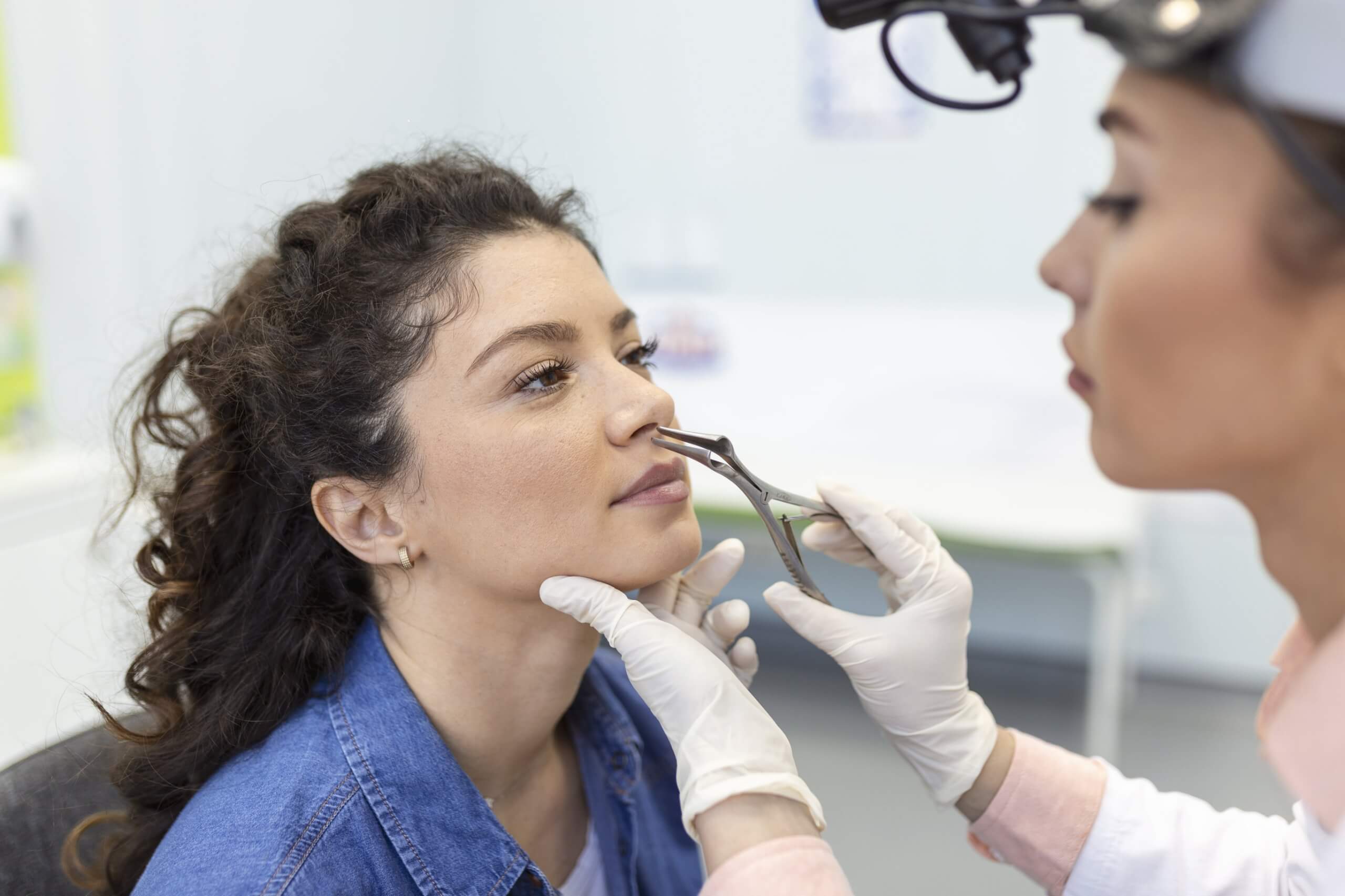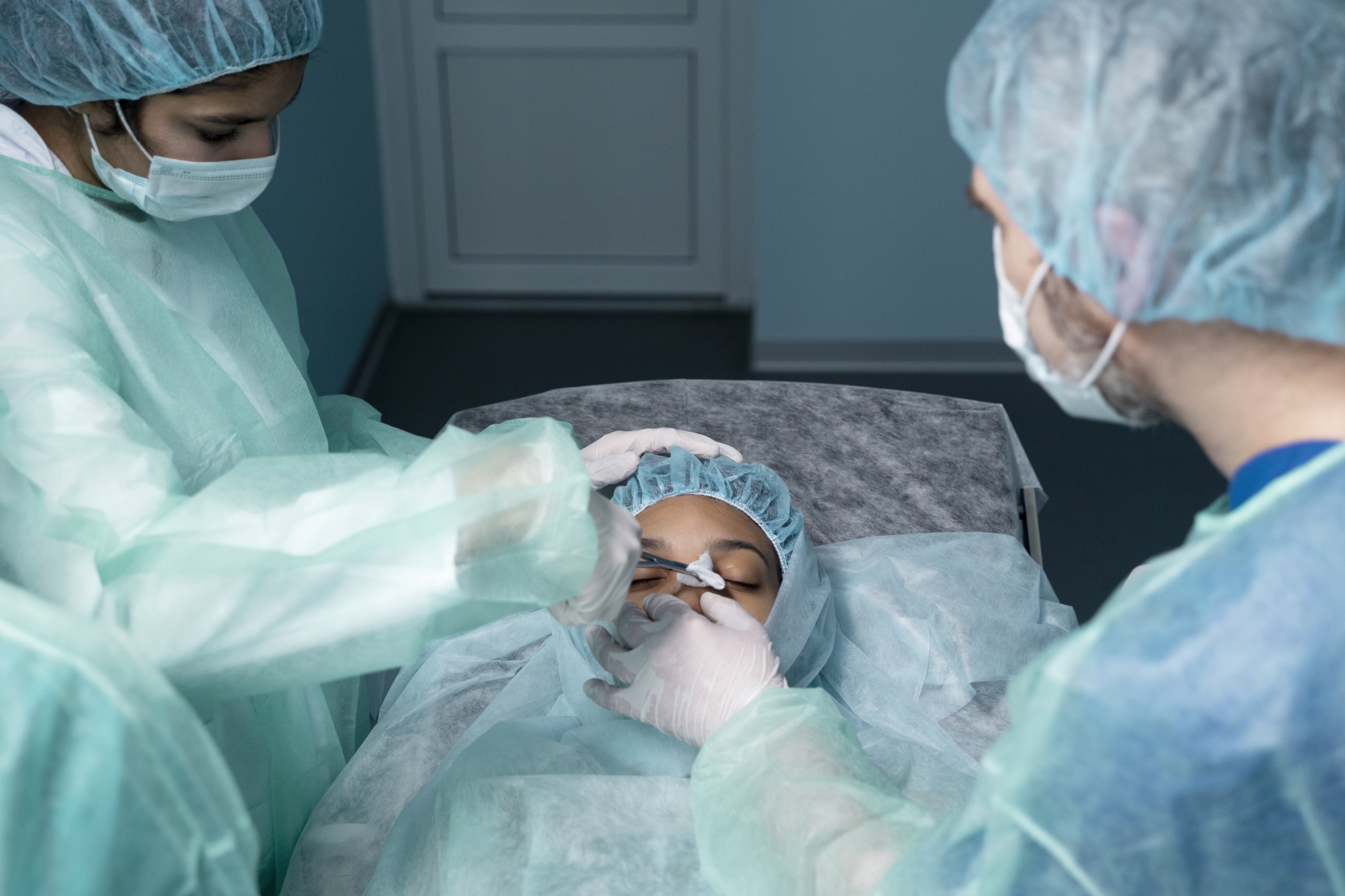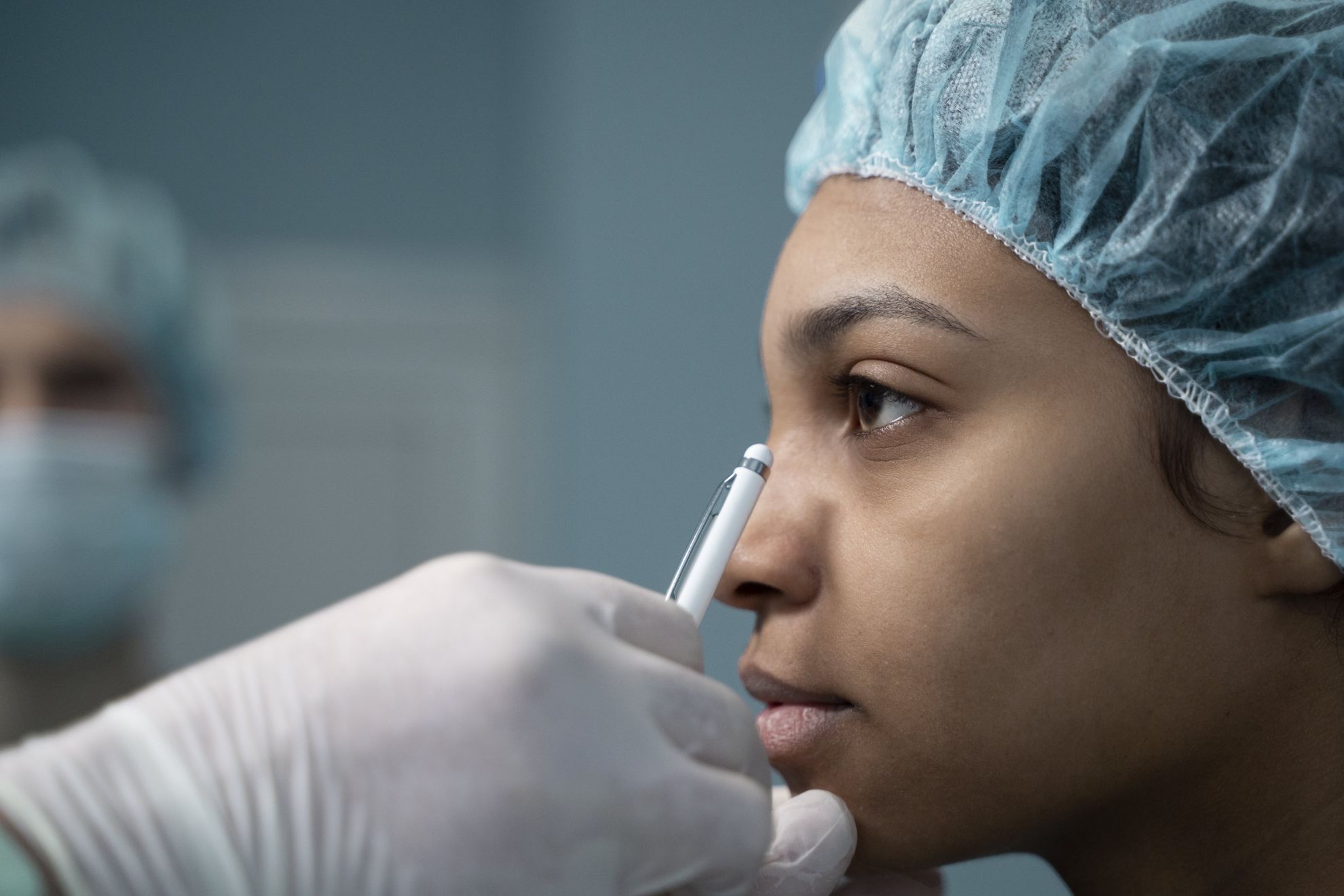Plastic Surgery
Plastic, reconstructive and aesthetic surgery is a surgical specialty that focuses on restoring or improving body shape and function. This field is divided into three main sections: Plastic Surgery: Plastic surgery focuses on improving the shape and function of the body. Conditions such as scars, congenital abnormalities, post-traumatic deformities or reconstruction after cancer fall under the field of plastic surgery. Reconstructive Surgery: Reconstructive surgery aims to repair tissue or structures lost due to injury, congenital defects or surgical procedures. For example, procedures such as breast reconstruction, burn treatment or facial reconstruction fall under the scope of reconstructive surgery. Aesthetic Surgery: Aesthetic surgery includes surgical procedures to improve or change a person's appearance. These are usually voluntary and aim to make a person look younger, more balanced or more attractive. Cosmetic surgeries include procedures such as breast augmentation, rhinoplasty (nose job), liposuction (fat removal), and facelift.
Plastic, Reconstructive and Aesthetic Surgery
- What Is Plastic, Reconstructive and Aesthetic Surgery?
- Which Subbranches Are There within Plastic, Reconstructive and Aesthetic Surgery?
- What Is The Difference Between Plastic, Reconstructive Surgery and Aesthetic Surgery?
- Which Treatments Does Plastic Reconstructive and Aesthetic Surgery Provide?
- Which Diseases Does Plastic Reconstructive Surgery Treat?
- Which Diseases Does Aesthetic (Cosmetic) Surgery Treat?
Plastic, Reconstructive and Aesthetic Surgery
- What Is Plastic, Reconstructive and Aesthetic Surgery?
- Which Subbranches Are There within Plastic, Reconstructive and Aesthetic Surgery?
- What Is The Difference Between Plastic, Reconstructive Surgery and Aesthetic Surgery?
- Which Treatments Does Plastic Reconstructive and Aesthetic Surgery Provide?
- Which Diseases Does Plastic Reconstructive Surgery Treat?
- Which Diseases Does Aesthetic (Cosmetic) Surgery Treat?
What Is Plastic, Reconstructive and Aesthetic Surgery?
Plastic, Reconstructive and Aesthetic Surgery is a discipline consisting of three different surgical branches that serve different purposes.The word plastic means “shaping” in Greek whereas reconstructive surgery means surgical repair and reformation. And aesthetic surgery serves the purpose of more beautiful and coherent appearance.
The plastic and reconstructive surgery is a surgical branch aiming to improve deformity caused by congenital or acquired abnormalities and coherently reshape the body image.
The plastic and reconstructive surgery concerns with all kinds of defects effecting cutaneous, subcutaneous tissues and bones all over the body.While doing so, the basic principle is to repair the missing tissues with other tissues similar to the missing ones.
The plastic surgery is a fundamental medical branch aiming to repair tissues and treat malfunction and deformities.
The reconstructive surgery concerns with reconstruction of poorly affected tissues with other tissues pretending as previous or normal location or shape, and repair of all kinds of congenital or acquired tissue and organ loss effecting cutaneous, subcutaneous tissues and bones all over the body.
The aesthetic surgery, on the other hand, is the correction and reshaping of the tissues cosmetically and medically causing dissatisfaction. It involves the surgeries and interventions performed to beautify and perfect the facial and body appearance even more. In this regard, the basic aim is beauty and aesthetic concerns rather than a medical problem.
Which Subbranches Are There within Plastic Reconstructive and Aesthetic Surgery?
Aesthetic (Cosmetic) Surgery:
The aesthetic surgery basically includes all aesthetic (cosmetic) interventions performed on face and body rather than a medical problem. It is performed to increase aesthetic appeal in a specific part of face or body, and proportion it with other parts of the body. Providing healthy, custom and natural sense of beauty is the fundamental principle.
Microsurgery:
This is a surgery performed under the surgical microscope using special microsurgery tools. Reattaching the severed hand, foot or other tissues (replantation) can be achieved thanks to this surgical technique. Function of the severed organ is reactivated with reattaching the small vessels and nerves. Moreover, tissue transfer is possible for the defect area. Nowadays, thin vessels and nerves measuring up to 0.5 mm can be reattached.
Maxillofacial Surgery:
It deals with the repair of bones in facial area.
For example: Alignment of jawbone (orthognathic surgery), facial bone fractures, congenital clefts.
Craniofacial Surgery:
It concerns with the correction of congenital or acquired abnormalities and deformities in cranial bones. This branch is divided into two; pediatric and adult craniofacial surgery.
- The pediatric craniofacial surgery mainly includes the correction of congenital abnormalities in head-face bones and soft tissues (cleft lip-palate, skull deformities) along with pediatric facial injuries.
- The adult craniofacial surgery, on the other hand, deals with the repair and reconstruction of acquired traumatic injuries.
Hand Surgery:
Correction of traumatic defects in hands (laceration, contusion, avulsion), shape, function and congenital deformities (finger abnormalities, syndactyly, polydactyly, cleft hand, deformed hand etc.), repair of tendons and nerves, treatment of hand tumors and hand burns are possible thanks to the hand surgery.
Endoscopic Surgery:
This method involves the surgeries performed with an endoscope without making larger incisions. With the help of the endoscope, face and brow lifting, breast prosthesis placement and neurovascular surgeries have become possible.
What Is the Difference Between Plastic, Reconstructive Surgery and Aesthetic Surgery?
The Plastic and Reconstructive Surgery mainly concerns with health-associated vital functions whereas the Aesthetic Surgery aims to improve physical appearance of the individuals in terms of its techniques and principles.
Which Treatments Does Plastic Reconstructive and Aesthetic Surgery Provide?
Aesthetic Surgery
- Rhinoplasty
- Otoplasty
- Liposuction
- Breast augmentation
- Reduction mammaplasty
- Breast lifting
- Gynecomastia Surgery
- Abdominoplasty
- Blepharoplasty
- Face lifting and facial aesthetic
- Brow and temporal lifting
- Chin augmentation/reduction
- Fat injection
- Labioplasty
- Lip augmentation
- Dermabrasion
- Arm, leg and body aesthetic
- Eye contour aesthetic
- Brow lifting
- Hair transplant
- Neck lifting
- Genital aesthetic
Reconstructive Surgery
- Breast reconstruction
- Repair of cleft palate and lip
- Congenital abnormalities
- Sequels of burn
- Skin tumors and treatment
- Facial trauma
- Hand surgery
- Skin defects
Nonsurgical Procedures
- Filling
- Botox treatment
- Wrinkle treatment
- Labioplasty
Which Diseases Does Plastic Reconstructive Surgery Treat?
The diseases that the Plastic Reconstructive Surgery treats are listed below:
- Absence of external ear, jug ear and other deformities
- Nasal defects, tumors and avulsions
- Facial deformity, asymmetry, congenital masses, rare facial clefts
- Bone and soft tissue traumas of face
- Absence of breast, asymmetry or excess breast tissue
- Post-cancer breast reconstruction
- Gynecomastia (abnormal enlargement of breasts in men)
- Congenital abnormalities of genital organs
- Repair of genital organs, replantation of severed organs
- Cleft lip-palate
- Craniofacial-maxillofacial abnormalities, deformities, irregularities and absence of jaw, face and head bones
- Orthognathic surgery, jaw movement disorders
- Salivary gland problems
- Congenital tumor, nevus, mass, vascular malformations, hemangioma
- Maxillofacial surgery, traffic accident, bone defects, fractures, deformity and malfunction secondary to tumor and other conditions
- Head-neck tumors and repair of their defects
- Defects of chest and abdominal wall
- Hand surgery, trauma, tumor, finger transfer, finger repair and lengthening
- Absence and deformities of hands and feet
- Peripheral nerve problems, traumas, neuropathy, defects, masses
- Skin and soft tissue tumors
- Acute burn and post-burn deformities, contractions, shrinkages, damages of electrical and chemical substances on soft tissues
- Cutaneous and subcutaneous injuries secondary to various infections, radiation and other effects
- Chronic injuries (pressure sore, venous wounds, diabetic foot ulcer)
Which Diseases Does Aesthetic (Cosmetic) Surgery Treat?
The diseases that the Aesthetic Surgery treats are listed below:
- Aesthetic and functional nasal-nasal tip correction (rhinoplasty, nasal tip plasty, septorhinoplasty)
- Facial rejuvenation (face lifting, eyelid and circumoral revisions, wrinkle treatment)
- Endoscopic face-brow lifting
- Eyelid aesthetic (blepharoplasty)
- Correction of jug ear and other aesthetic problems in external ear
- Chin augmentation and reduction operations (mentoplasty)
- Removal of acne scar and irregularities from the skin
- Hair transplant-replacement
- Laser application, skin peeling, improvement of body blemishes and vascular malformations
- Aesthetic breast operations: Breast augmentation, reduction mammaplasty and breast lifting
- Operations aiming to reduce excess cutaneous-subcutaneous fat tissue (liposuction-lipectomy)
- Abdominoplasty
- Body contouring operations such as arm and thigh lifting, contour correction
- Contour corrections with prosthesis placed in soft tissue (hip and thigh implants, pectoral [breast] implants in men)
- Various skin cares and interventions
Doctors
List of doctors under the HOP of the corporation
Daily Usefull Information
You can read our blog posts to get more information about the treatment.
Best Plastic Surgeon in Turkey
This week we wrote for you what you need to follow in choosing the best plastic surgeon in Turkey.
Read MoreIs It Safe to Get Plastic Surgery in Turkey?
In this week's article for you, we will touch on the details of plastic surgery performed in Turkey.
Read MoreEyelid Surgery (Blepharoplasty): Achieving Larger and More Vibrant Eyes
Eyes are the most striking and expressive features of your face. However, aging, genetic factors, or environmental influences can lead to sagging, puffiness, and fine lines around the eyelids.
Read MoreCelebrity Blepharoplasty Before and After
If you are considering blepharoplasty but have cosmetic concerns, it is always a good idea to examine the before and after of celebrities who have had eye aesthetics.
Read MoreHow Long Does it Take to Recover from Eyelid Surgery?
Eyelid surgery remains popular as an aesthetic that people have done to tighten their skin and brighten their gaze. The fact that the eye and its surroundings have a sensitive structure is important for people during the recovery period of eyelid surgery compared to other aesthetics. In this week's article, we have compiled the steps waiting for you during the recovery period after eyelid surgery. We hope you enjoy the read.
Read MoreWhat is Cat Eye Surgery? Cat Eye Surgery in Turkey
Turkey is one of the centers that provide long-lasting beauty and confidence to people in cat eyes surgery. You can contact us for cat eye removal and cat eyes cost.
Read MoreWhat is Upper Blepharoplasty? Upper Blepharoplasty Turkey
The central eyes of the face are made perfect with upper eyelid surgery.
Read MoreWhat is a Vampire Breast Lift (PRP)? Vampire Breast Lift Cost
In this week's article, we wrote what you need to know about vampire breast lift.
Read MoreAesthetic, Plastic, and Reconstructive Surgery
We have compiled all the questions and information that are curious about and necessary to know about aesthetic, plastic, and reconstructive surgery under this content framework.
Read MoreBreast Reduction Recovery Week by Week
Breast reduction is a reshaping of the breast size by removing excess skin. Since it is a surgical procedure, breast reduction healing time is a process that should be observed. For this reason, we mentioned Breast Reduction Surgery Recovery Week by Week in our content.
Read MoreCan You Breastfeed After a Breast Reduction?
Feeding newborns exclusively with breast milk for up to six months is critical for their body development. In this case, the effect of breast reduction surgery on pregnancy and breastfeeding is also curious. We wrote this week's content for those who are concerned about "Can I Breastfeed After a Breast Reduction?".
Read MoreWhat is a Mid Facelift? Turkey Mid Facelift Cost
In this week's article, we touched on the details of mid-facelift surgery. You can find all the details in the content of my article, you can contact us for any questions you have in mind. We wish you a pleasant reading.
Read MoreWhat is the Ponytail Facelift? Ponytail Lift in Turkey Cost
Wrinkles and sagging begin to appear on the face due to aging and poor eating habits. Ponytail facelift, one of the facial rejuvenation techniques, promises a vibrant and youthful appearance to people by preventing aging of the skin.
Read MoreWhat is a Mini Facelift? Mini Facelift in Turkey Cost
If you are not sure if mini facelift aesthetics appeals to you, this article is for you! Anti-aging mini facelift surgery has recently emerged as one of the most preferred aesthetics.
Read MoreBest Facelift Surgeon in Turkey
This week we shared our tips on how to find the best facelift surgeon in Turkey.
Read MoreCelebrity Facelifts
This week, we touched on the speculations of celebrities who had facelift surgery.
Read MoreWhat is Chin Liposuction? Chin Liposuction Turkey
Chin liposuction is applied to eliminate jowls. Chin liposuction in Turkey is among the most frequently performed operations.
Read MoreHow to Get Rid of Double Chin?
Double chin appearance has become a common problem for many people today. In this week's article, we wrote about ways to get rid of the double chin appearance.
Read MoreComparison of Liposuction and Lipolysis Fat Removal Methods: Which Is Better for You?
Achieving the perfect body shape has become more accessible today. However, when choosing among body shaping methods, you may encounter many options.
Read MoreMommy Makeover Packages Price Near Me
We wrote this week's content to provide information about mommy makeover packages and prices that provide comprehensive beauty.
Read MoreRhinoplasty Surgery: Alcohol and Smoking
Smoking and alcohol consumption are among the points that people who have rhinoplasty are curious about after the operation.
Read MoreBest Rhinoplasty Surgeon in Turkey
We have compiled the steps you need to consider to choose the best rhinoplasty doctor in Turkey. Have a pleasant reading.
Read MoreWhat is Asian Rhinoplasty? Asian Rhinoplasty Cost Turkey
Asian rhinoplasty is one of the aesthetics that offer extraordinary beauty. We have compiled the questions you need to know about Asian rhinoplasty, which has become very popular recently.
Read MoreWhat is Closed Rhinoplasty? Closed Rhinoplasty Turkey Cost
In this week's article, we touched on closed rhinoplasty. You can find detailed information about closed rhinoplasty in Turkey in our article.
Read MoreWhat is Piezo Rhinoplasty? Piezo Rhinoplasty Turkey
In this week's article, we touched on the details of piezo rhinoplasty. We wish you enjoyable reading.
Read MoreRhinoplasty Recovery: How Long is Rhinoplasty Recovery?
In this week's article, we wrote about what awaits patients during the rhinoplasty recovery period.
Read MoreHow to Find a Best Rhinoplasty Surgeon Turkey?
We have prepared a guide on what to consider when choosing a rhinoplasty surgeon in Turkey.
Read MoreWhat is Male Rhinoplasty? Male Rhinoplasty Turkey Cost
In the content of this week's article; You can find answers to questions and derivatives such as male rhinoplasty doctor recommendation, male rhinoplasty prices, is male rhinoplasty more difficult?, how many cm should the ideal male nose be?, how much is male rhinoplasty? We wish you enjoyable reading.
Read MoreWhat is Ethnic Rhinoplasty? Ethnic Rhinoplasty Turkey Cost
This week's article is about Ethnic Rhinoplasty Turkey. We wish you a good reading.
Read MoreTip Rhinoplasty Turkey
Tip rhinoplasty in Turkey is performed by specialized surgeons at affordable costs. People who want to safely correct the tip of the nose prefer Turkey for tip rhinoplasty.
Read MoreWhat is a Mini Tummy Tuck? Mini Tummy Tuck in Turkey
This week, we will share with you the details of mini tummy tuck surgery in Turkey. We wish you pleasant reading.
Read More











































